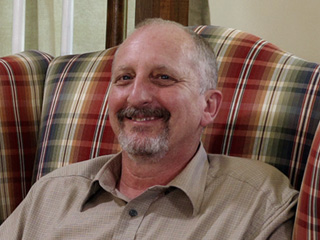Publisher's note: The author of this post is Dan Way, who is an associate editor for the Carolina Journal, John Hood Publisher.
Folwell wants providers to help reduce unfunded liabilities in insurance plan for state workers, retirees
State Treasurer Dale Folwell summoned the state's key health care players to a roundtable and instructed them to help the State Health Plan save $300 million each of the next five years.
"This is a serious matter," Folwell said Wednesday, July 18. The State Health Plan is saddled with $35 billion in unfunded liabilities because the General Assembly promised free future health-care benefits for retirees, but never set aside money for them.
"Most of what happens in health care right now is unexplainable, it's unacceptable, and financially the State Health Plan is unsustainable," Folwell said. The state spends $750 million every 30 days on health care.
Reducing spending $1.5 billion over the next five years "doesn't mean we can climb out of this hole immediately," Folwell said. But the savings could be set aside to start retiring the $35 billion debt.
If costs keep rising, spending cuts will be necessary in education, transportation, economic development, and other core functions of government.
North Carolina is self-insured, relying on employee contributions and tax dollars. Blue Cross and Blue Shield of North Carolina administers the plan. Folwell directed BCBSNC in May to cut provider rates by 15 percent this year when it renegotiates contracts, amounting to $300 million annually.
"If you're just here to be affirmed about something you already think, you're probably in the wrong meeting," Folwell told more than three dozen people assembled at the Treasurer's Office and listening by teleconference.
Before the meeting, some of the health-care organizations told the treasurer their subsidies must continue or they would go out of business.
"Shame on you for saying that," Folwell said.
"The State Health Plan can't be looked upon as a place that will continue to subsidize other businesses," Folwell said.
"That is not our fiduciary responsibility to the participants of this plan and the taxpayers of our state. If you've got a problem with how you run your business, or the profitability of your business, you need to solve your problems just like we're trying to solve ours," he said.
"This isn't a new conversation, so I dare say we have ideas," said Dee Jones, State Health Plan director.
"How do we make providers change their behavior?" She cited an example of a doctor who prescribed an $800 foot cream when less expensive brands were available.
Many of the health-care provider groups' responses were familiar. They cited a need for a central health information exchange; a lack of claims data; doctors' unwillingness to share patient medical records; sharp differences among insurance benefits; and too many billing systems to navigate - hampering efficiency and cost-cutting measures.

Ardis Watkins, spokeswoman for the State Employees Association of North Carolina, offers remarks during a health care cost-containment roundtable called July 18 by State Treasurer Dale Folwell. (CJ photo by Dan Way)
Robin Huffman, executive director of the N.C. Psychiatric Association, said undiagnosed and untreated mental illness may be one reason State Health Plan costs increased. Mental health needs to be integrated with physical health in a collaborative care model. She cited a
2014 study updated this year estimating a potential $38 billion to $68 billion savings nationally.
She said the current incentive in behavioral health care is fee-for-service payments:
"The more we do, the more we get our bills paid." This model - volume versus "value" - isn't better for patients, but it pays providers more.
Greg Griggs, executive vice president of the N.C. Academy of Family Physicians, said doctors need pricing transparency. Doctors might deal with up to 20 different health plans all paying different prices.
One new program on the market allows doctors to make informed choices by previewing drug costs before issuing prescriptions.
Timothy Reeder, vice chairman for clinical operations at Brody School of Medicine's Department of Emergency Medicine at East Carolina University, said studies show 30 percent of spending in fee-for-service models is wasted on things such as duplicative and unnecessary tests.
Lack of clinical data and prices to compare is a major hurdle to cut costs. Reeder said BCBSNC and the State Health Plan should have sufficient raw data to make a comparative pricing tool.
Rob Warner, a BCBSNC official in charge of provider contracts, said its claims information generally has a 30-day lag, so doctors wouldn't have immediate access for comparison.
But the insurer does have 1,000 common treatments on its transparency website. On Tuesday it announced its rollout of the
SmartShopper program, the only tool of its kind in the state. It provides cash incentives to insurance plan members to shop for the highest quality and most affordable doctors and hospitals delivering common procedures.
Margaret Foreman, a lobbyist for the N.C. Association of Educators, said State Health Plan members should take more responsibility for their own health by being more cost-conscious. But some employees she represents work two and three jobs, and have little time to do extensive research. Easily understood educational materials and websites would help.
Cody Hand, senior vice president of the N.C. Hospital Association, suggested modeling a program similar to one Greensboro-based Cone Health system developed. It noticed a high prevalence of Type 2 diabetes among its employees and developed a treatment program that saves $8,000 per patient per year.
Rob Lemma, a lobbyist for the state's OB-GYN doctors, cited a successful initiative the State Health Plan could emulate. One thousand doctors in 160 programs participate in a Medicaid pregnancy medical home program providing basic risk screenings and analytics. The results: safer labor and deliveries; healthier babies; fewer premature and caesarean section births; and lower costs.























